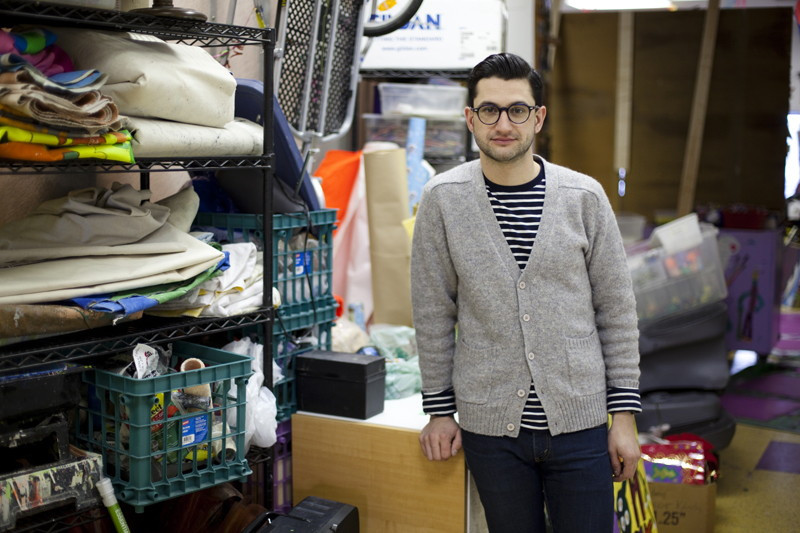So you want to be an artist?
Local experts provide tips and tricks for how to get going without the bank knowing
It’s difficult at times to see popular or successful artists as everyday people. It’s difficult to imagine the intervening stages between just another person on the street and a successful musician or a gallery-showing photographer or inspiring actor.
If you’re interested but completely green, starting off can be the most difficult part - potentially confusing, nerve-wracking and expensive. While those first two things might be unavoidable for some, becoming a successful artist doesn’t have to lead to bankruptcy.
Saving money on musical gear, to start, comes down to being willing to make do or learning to work on and upgrade your own instruments.
“The most important thing is to feel comfortable with your instrument,” says JD Edwards, a local singer-songwriter and front man of the JD Edwards Band. “It’s not necessary for you to go out and spend thousands of dollars on a new instrument. It’s nice to have a really nice instrument, but it’s not the most important thing.”
Whatever you decide to do on the equipment front, Edwards says that the most important way to make your musical experience worthwhile is to put in the time.
“The more you practice, the better you’ll be and ultimately the more money you’ll make down the line, if that’s the way you want to look at it,” says Edwards. “It’s an investment for the future.”
If your band or group decides to take to the road, Edwards suggests setting realistic limits regarding what you are willing to do without. Sleeping in the van or on someone’s floor will save you money, but might impede on your performance quality the next day.
“I know that if I have to play a show the next night, I need to be on my game,” he says.
When the time comes to record, studio time is expensive and maybe even restrictive, though Edwards admits this will be less true for some styles of music.
“It’s all about pre-production, the way I look at it,” Edwards says. “The more that I record at home, the more I record outside of a major studio the better, because then you can really understand your songs.”
More than anything else, Edwards says it is crucial to be part of the artistic community and aware of what’s going on in the city. This makes it much easier to receive support, both financial and otherwise.
This is an important part of other art forms as well.
Josh Ruth, managing director at Art City Inc., says that visual artists should visit places such as Ace Art Inc., the Cre8ery and Artspace, both to get a sense of what other artists are doing and to get their own work seen.
“If people start to apply for shows at these places to show their work in very informal, very grass-rootsy-style gallery settings, then they can at least start to accumulate an exhibition history and get themselves out there,” says Ruth.
“More than anything else you can attach yourself to a network,” he adds. “People are generally very happy to help.”
Art City, a West Broadway community art centre, provides free arts programming for anyone interested in a wide range of arts, from pottery to digital photography.
Ruth says that while some beginners may feel the need to attend an art school, it’s not necessarily for everyone.
“It can be very, very helpful, but some people are under the impression that in order to be an artist you have to go to art school, and some of the most successful artists have not been formally educated,” Ruth says. “For each individual it’s important to weigh out the options and decide if that’s the right thing for them.”
When it comes to the more fundamental process of acquiring supplies, consider asking friends - or friends’ parents - who may have abandoned their brief artistic careers. Ruth says that donations of basement art supply stashes are a valuable resource to Art City.
“There are a hell of a lot of people out there that have art supplies because they decided that they were going to get creative one year and (then the supplies) just sat in the basement,” Ruth says.
He also suggests scavenging at thrift stores such as Arts Junction, a volunteer-run arts depot where artists can search through various kinds of donations and take what they find for free.
Whatever your educational background or main medium, Ruth says the best way to be an effective artist is to always have your sketchbook handy.
“If you’re at all serious about being a practicing artist, your sketchbook is like your idea journal,” Ruth says. “It’s so crucial to have that to go back to whenever it comes time to produce and create.”
“Without documenting, ideas are fleeting,” he says.
For more tips and suggestions from JD Edwards and Josh Ruth, visit www.uniter.ca/blogs.
Published in Volume 66, Number 16 of The Uniter (January 18, 2012)







